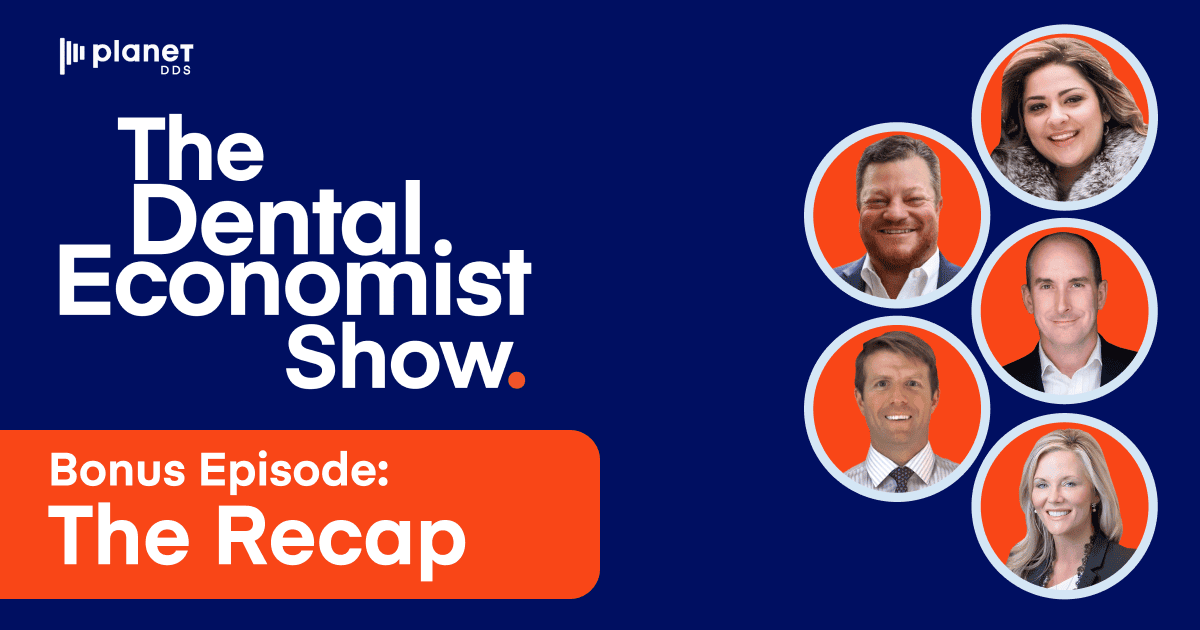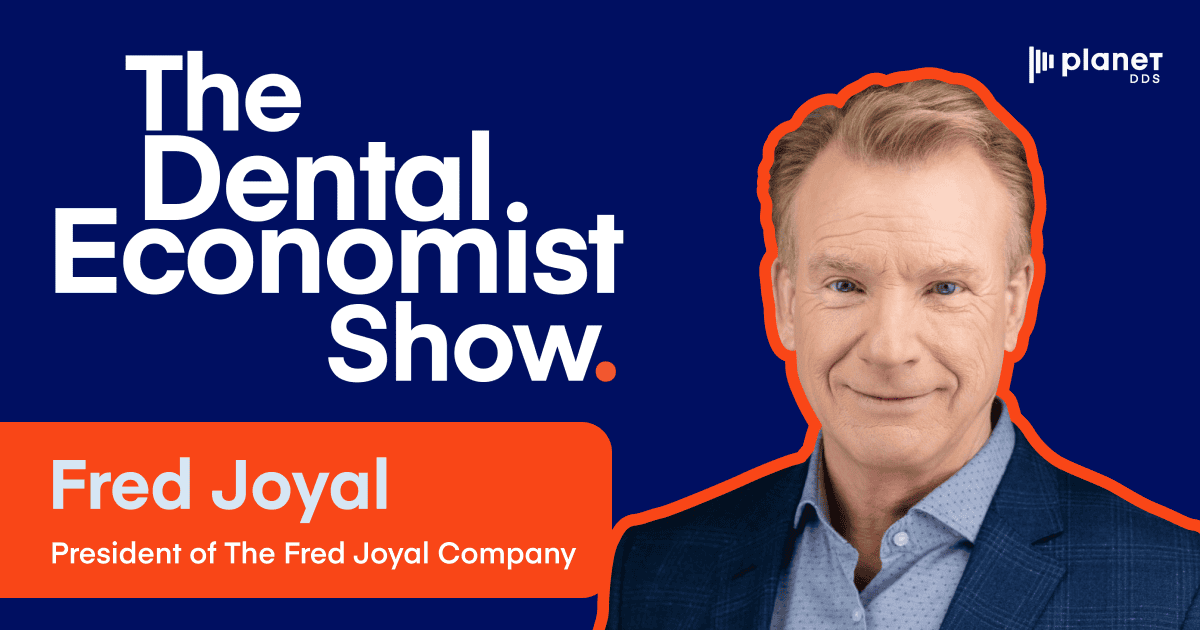The Dental Economist Show Bonus Episode: The Recap

In this bonus episode of The Dental Economist Show, host CRO Mike Huffaker of Planet DDS looks back at some of the insightful conversations he’s been having with a multitude of guests on the podcast. Listen on to hear Randa Seif, chief operating officer of CaliDental, examine the benefits of adopting a community-centric business strategy, Brandon Robert Halcott, co-founder of Seva Dental Team, discuss ways of creating profitability in a dental business, and much more.
Tune in to learn:
- How to build winning teams
- The challenges and opportunities of implementing technology in the dental industry
- Changing expectations of healthcare professionals
The Dental Economist Show Highlights
Centralizing non-patient care function
At the Planet DDS sales and marketing summit, Randa Seif, COO of CaliDental, discussed a specialized operations platform designed to centralize non-patient care functions like scheduling, claims processing, and dental marketing. The approach is to delegate these tasks to experts at the corporate level rather than having individual practices handle them.
This strategy allows each office to focus on patient care and operational efficiency while corporate specialists manage areas such as marketing and billing. By centralizing these functions, practices are relieved from complex tasks, enabling them to concentrate on their core responsibilities and improving overall efficiency.
“So you have to make their work environment good for them to thrive. If not, it’s not going to work. You know, you have to make it very straightforward. You have to make it that they don’t work overly hard to get what they need. Just give them the information in front of them as soon as possible.” —Randy Seif, COO of CaliDental
Technological developments
When building a new organization, Brandon Robert Halcott, co-founder of Seva Dental Team, is particularly excited about advancements in AI for patient reactivation and efficiency. AI can now identify patients overdue for preventive care, automating follow-ups through text, email, or calls, which previously required manual lists.
Additionally, innovations in scanning technology are eliminating the need for uncomfortable impressions, reducing patient discomfort and minimizing errors in product delivery. These technologies enhance overall efficiency and improve patient experience by streamlining processes and increasing accuracy.
Learning when to give feedback
When managing people, Kristi Casey, CEO of Rock Dental Brands, recommends starting difficult conversations by asking if the person is ready for feedback, acknowledging that they might not be mentally prepared at the moment. This approach allows individuals to choose when to receive feedback, making them more receptive.
They emphasize the importance of expressing that feedback is given with their future success in mind, not to criticize, but out of genuine care for their growth. Transparency and showing investment in their development are crucial for effectively delivering constructive feedback.
“I want people to know I’m actively invested in them. So when I’m giving them feedback, it’s not because I’m trying to be critical of them. It’s not because I’m trying to, you know, be very picky on their certain tasks that they’ve done. It’s because I care about them as humans. And so I believe like, putting that on the table that I’m giving this to you because I care about you is very important. And then I believe in being super transparent.” —Kristi Casey, CEO of Rock Dental Brands
The importance of a robust tech stack
To accelerate growth and ensure a smooth start, Ben Walling, senior vice president and CTO of Sage Dental, says it is essential to have a robust tech stack that includes patient engagement tools for appointment reminders, confirmations, and self-scheduling. Given that patients now prefer text messages over phone calls, implementing these digital solutions is crucial for effective communication and scheduling.
Additionally, focusing on enhancing the staff experience is vital; software should streamline tasks to prevent staff from being overwhelmed with administrative duties, ensuring they can focus on providing high-quality patient care and maintaining a positive patient experience.
Asking the right questions
To truly understand someone’s intentions and motivations, it’s crucial to ask the right questions up front. As Jon Fidler a dental executive search consultant, highlighted in the discussion, the art of communication comes from listening and picking up on subtle cues. When you engage in a conversation, you can often feel when someone is being genuine and passionate.
By giving them space to express themselves and revealing insights through their responses, you get a better sense of who they are. Additionally, assigning small tasks or follow-ups can provide more clarity—if it takes them too long to respond, it may indicate they’re not as committed as they initially seemed. This process helps in discerning whether someone is truly aligned with their words or just telling you what you want to hear.
About The Dental Economist Show
Don’t miss this bonus episode to hear special guests discuss strategies you can use to grow your dental business. Tune in to the The Dental Economist Show weekly to learn how to optimize your practice’s value and stay ahead in a rapidly evolving industry.



